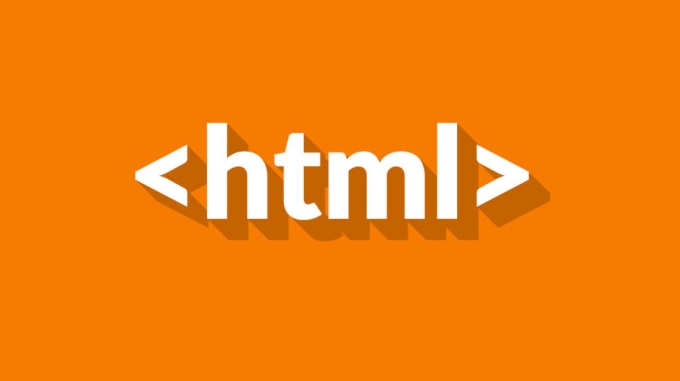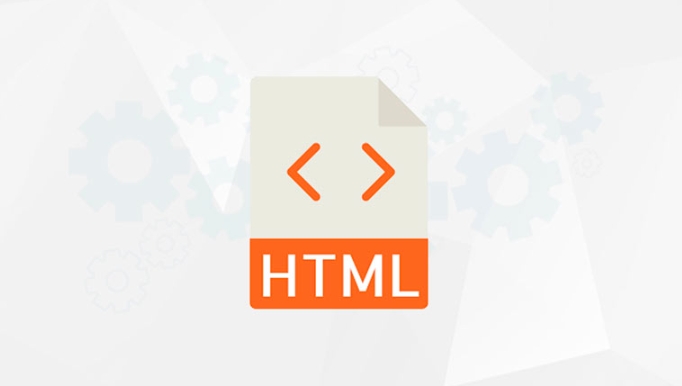Using native <button> elements is usually better than role="button" because the former comes with interactive features and barrier-free support. 1. <button> can focus and respond to Enter and Space keys by default; 2. Automatically submit forms and follow browser accessibility standards; 3. role="button" requires manual keyboard interaction, focus style and ARIA attributes; 4. role="button" should be used only in specific scenarios such as SVG or in restricted systems; 5. Use native buttons to save time and improve accessibility experience.
 element?">
element?">
If you're trying to make something clickable on a webpage—like a <div> or a <code><span></span> —you might come across role="button" and wonder how it's different from just using a real <button></button> element. The short answer is: they're not the same, and in most cases, using a native <button></button> is better unless you have a specific reason not to.  element?" /> element?" />
element?" /> element?" />
Here's what you need to know about the difference between role="button" and the actual <button></button> element.
Accessibility Basics: What Screen Readers See
When you use a regular <button></button> , screen readers automatically recognize it as an interactive element. They announce it properly, like “button” or “clickable,” and users know they can interact with it.
 element?" /> element?" />
element?" /> element?" /> If you slap role="button" onto a <div> or <code><span></span> , it does tell assistive tech that this thing is supposed to act like a button—but that's all it does. You still have to manually handle keyboard interactions (like Enter key presses), focus styles, and ARIA attributes. So while screen readers may say "button," it won't behave like one without extra code.
Native Button Handles Interaction Automatically
A real <button></button> comes with built-in functionality:
 element?" /> element?" />
element?" /> element?" />- It's focused by default
- It responds to Enter and Space key presses
- It submits forms if type is
submit - It follows browser accessibility standards out of the box
With role="button" , none of that works unless you add event listeners for keydown , focus , click , etc., yourself. For example, you'd need to do something like this:
element.addEventListener('keydown', function(e) {
if (e.key === 'Enter' || e.key === ' ') {
e.preventDefault();
// Trigger your action here
}
});And don't forget to manage focus and visual indicators so keyboard users know where they are.
Styling and Use Cases: When to Choose One Over the Other
Sometimes people avoid <button> because it has default styling that's hard to reset across browsers. But that's not a good reason to switch to role="button" . Instead, just reset the button styles:
button {
background: none;
border: none;
padding: 0;
font: inherit;
cursor: pointer;
} Use role="button" only when:
- You're working with elements that can't be buttons semantically (like inside SVGs)
- You're enhancing a non-form control that needs to look and act like a button but isn't one structurally
- Legacy systems or frameworks restrict using
<button></button>
But even then, always test for keyboard navigation and screen reader support.
Final Thoughts
So yes, role="button" makes an element announcement like a button, but it doesn't make it behave like one. If you go that route, you'll have to wire up all the expected behavior manually.
The <button></button> element, on the other hand, gets you 90% of the way there right out of the gate. Unless you have a strong reason otherwise, stick with native controls—they save time and improve accessibility by default.
Basically that's it.
The above is the detailed content of What is the difference between role='button' and the element?. For more information, please follow other related articles on the PHP Chinese website!

Hot AI Tools

Undress AI Tool
Undress images for free

Undresser.AI Undress
AI-powered app for creating realistic nude photos

AI Clothes Remover
Online AI tool for removing clothes from photos.

Clothoff.io
AI clothes remover

Video Face Swap
Swap faces in any video effortlessly with our completely free AI face swap tool!

Hot Article

Hot Tools

Notepad++7.3.1
Easy-to-use and free code editor

SublimeText3 Chinese version
Chinese version, very easy to use

Zend Studio 13.0.1
Powerful PHP integrated development environment

Dreamweaver CS6
Visual web development tools

SublimeText3 Mac version
God-level code editing software (SublimeText3)

Hot Topics
 Applying Semantic Structure with article, section, and aside in HTML
Jul 05, 2025 am 02:03 AM
Applying Semantic Structure with article, section, and aside in HTML
Jul 05, 2025 am 02:03 AM
The rational use of semantic tags in HTML can improve page structure clarity, accessibility and SEO effects. 1. Used for independent content blocks, such as blog posts or comments, it must be self-contained; 2. Used for classification related content, usually including titles, and is suitable for different modules of the page; 3. Used for auxiliary information related to the main content but not core, such as sidebar recommendations or author profiles. In actual development, labels should be combined and other, avoid excessive nesting, keep the structure simple, and verify the rationality of the structure through developer tools.
 What are the essential HTML elements for structuring a webpage?
Jul 03, 2025 am 02:34 AM
What are the essential HTML elements for structuring a webpage?
Jul 03, 2025 am 02:34 AM
The web page structure needs to be supported by core HTML elements. 1. The overall structure of the page is composed of , , which is the root element, which stores meta information and displays the content; 2. The content organization relies on title (-), paragraph () and block tags (such as ,) to improve organizational structure and SEO; 3. Navigation is implemented through and implemented, commonly used organizations are linked and supplemented with aria-current attribute to enhance accessibility; 4. Form interaction involves , , and , to ensure the complete user input and submission functions. Proper use of these elements can improve page clarity, maintenance and search engine optimization.
 Implementing client-side form validation using HTML attributes.
Jul 03, 2025 am 02:31 AM
Implementing client-side form validation using HTML attributes.
Jul 03, 2025 am 02:31 AM
Client-sideformvalidationcanbedonewithoutJavaScriptbyusingHTMLattributes.1)Userequiredtoenforcemandatoryfields.2)ValidateemailsandURLswithtypeattributeslikeemailorurl,orusepatternwithregexforcustomformats.3)Limitvaluesusingmin,max,minlength,andmaxlen
 How to group options within a select dropdown using html?
Jul 04, 2025 am 03:16 AM
How to group options within a select dropdown using html?
Jul 04, 2025 am 03:16 AM
Use tags in HTML to group options in the drop-down menu. The specific method is to wrap a group of elements and define the group name through the label attribute, such as: 1. Contains options such as apples, bananas, oranges, etc.; 2. Contains options such as carrots, broccoli, etc.; 3. Each is an independent group, and the options within the group are automatically indented. Notes include: ① No nesting is supported; ② The entire group can be disabled through the disabled attribute; ③ The style is restricted and needs to be beautified in combination with CSS or third-party libraries; plug-ins such as Select2 can be used to enhance functions.
 Implementing Clickable Buttons Using the HTML button Element
Jul 07, 2025 am 02:31 AM
Implementing Clickable Buttons Using the HTML button Element
Jul 07, 2025 am 02:31 AM
To use HTML button elements to achieve clickable buttons, you must first master its basic usage and common precautions. 1. Create buttons with tags and define behaviors through type attributes (such as button, submit, reset), which is submitted by default; 2. Add interactive functions through JavaScript, which can be written inline or bind event listeners through ID to improve maintenance; 3. Use CSS to customize styles, including background color, border, rounded corners and hover/active status effects to enhance user experience; 4. Pay attention to common problems: make sure that the disabled attribute is not enabled, JS events are correctly bound, layout occlusion, and use the help of developer tools to troubleshoot exceptions. Master this
 Configuring Document Metadata Within the HTML head Element
Jul 09, 2025 am 02:30 AM
Configuring Document Metadata Within the HTML head Element
Jul 09, 2025 am 02:30 AM
Metadata in HTMLhead is crucial for SEO, social sharing, and browser behavior. 1. Set the page title and description, use and keep it concise and unique; 2. Add OpenGraph and Twitter card information to optimize social sharing effects, pay attention to the image size and use debugging tools to test; 3. Define the character set and viewport settings to ensure multi-language support is adapted to the mobile terminal; 4. Optional tags such as author copyright, robots control and canonical prevent duplicate content should also be configured reasonably.
 Debugging common HTML validation errors.
Jul 03, 2025 am 02:41 AM
Debugging common HTML validation errors.
Jul 03, 2025 am 02:41 AM
When encountering HTML verification errors, you must first clarify the problem and correct it according to the specifications. 1. When the required attributes are missing, the src and alt and a href of img should be completed; 2. When the tag nesting is incorrect, the structure should be clarified and the tags should be closed correctly to avoid confusion in nesting block-level elements; 3. When using invalid or discarded tags, you should refer to the MDN document to replace it with modern writing methods, such as replacing center and font with CSS; 4. When character encoding problems, add metacharset="UTF-8" and ensure that the file is saved in UTF-8 format to solve it.
 How to associate captions with images or media using the html figure and figcaption elements?
Jul 07, 2025 am 02:30 AM
How to associate captions with images or media using the html figure and figcaption elements?
Jul 07, 2025 am 02:30 AM
Using HTML sums allows for intuitive and semantic clarity to add caption text to images or media. 1. Used to wrap independent media content, such as pictures, videos or code blocks; 2. It is placed as its explanatory text, and can be located above or below the media; 3. They not only improve the clarity of the page structure, but also enhance accessibility and SEO effect; 4. When using it, you should pay attention to avoid abuse, and apply to content that needs to be emphasized and accompanied by description, rather than ordinary decorative pictures; 5. The alt attribute that cannot be ignored, which is different from figcaption; 6. The figcaption is flexible and can be placed at the top or bottom of the figure as needed. Using these two tags correctly helps to build semantic and easy to understand web content.






